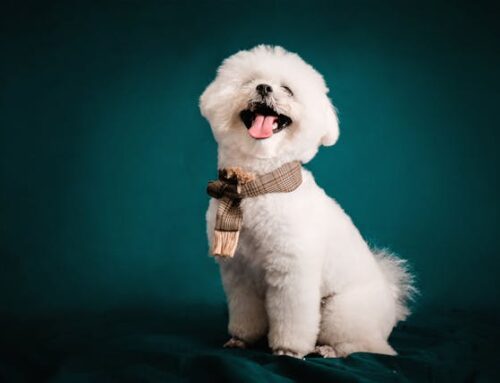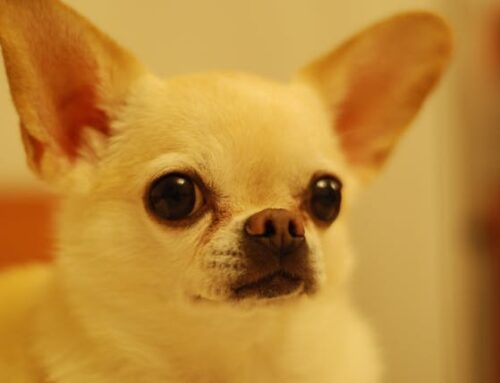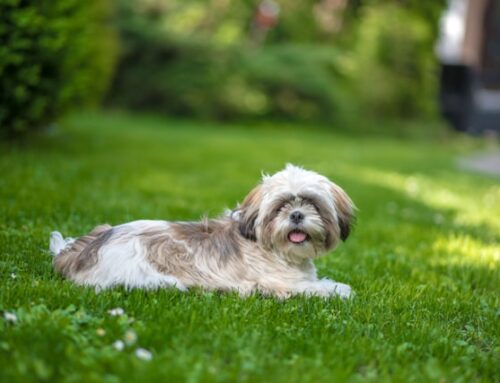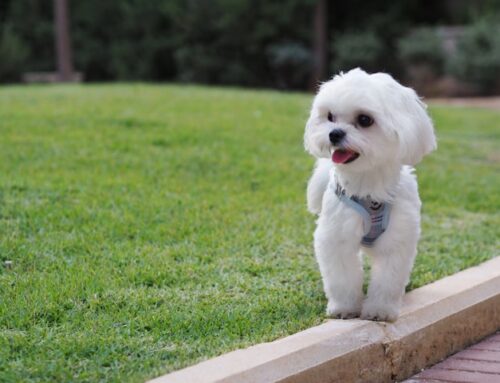Overview
Introduction: Are Dachshunds Hypoallergenic

You’ve probably heard the buzz about hypoallergenic dogs, and if you’re a dachshund enthusiast, you might be wondering – are these charming sausage dogs hypoallergenic?
In this article, we’ll embark on a journey to unravel the truth behind this question. We’ll delve into the definition of hypoallergenic dogs, dispel common misconceptions about dachshunds, and explore the intricate world of allergies.
Are dachshunds hypoallergenic? This is a common inquiry among dachshund lovers, and we’ll explore the answer to this question.
We’ll also look at the criteria set by organizations like the American Kennel Club (AKC) for hypoallergenic breeds and examine whether dachshunds fit into this category.
Join us on this exploration as we navigate the nuances of dachshund hypoallergenic qualities and uncover the facts surrounding allergies and these beloved dogs. By the end of this journey, you’ll have a clearer understanding of whether dachshunds can be considered a hypoallergenic breed.

Understanding Allergies
Causes of Pet Allergies
Pet allergies can stem from various sources, including dander, saliva, and urine. But what exactly triggers these reactions?
Understanding the factors that contribute to pet allergies, such as exposure to a dog’s saliva or inhaling as much dander, is essential. For individuals prone to allergic responses, identifying the specific triggers and their sources is crucial in developing effective strategies to manage and alleviate symptoms. Join us as we delve into the intricacies of pet allergies, exploring the role of different allergens and their impact on triggering allergic responses in susceptible individuals.
Impact of Pet Dander on Allergic Response
Dander, those tiny flecks of skin shed by pets, is a major culprit in allergy episodes. Let’s explore how it affects allergic individuals.
For those with dog allergies or general pet allergies, pet allergens like dander can be significant triggers. Understanding how pets produce dander and the role it plays in triggering allergies is crucial for allergy sufferers. Dander is not only found in a dog’s fur but can also be present in their saliva, contributing to pesky allergies.
Exposure to pet allergens like dander can lead to allergy symptoms and an allergic reaction in sensitive individuals. Exploring the ways in which dander can trigger allergies provides insights into managing and minimizing the impact of pet-related allergic responses. Join us in unraveling the intricacies of dander and its connection to allergic symptoms, empowering allergy sufferers with knowledge on mitigating the effects of these common triggers.
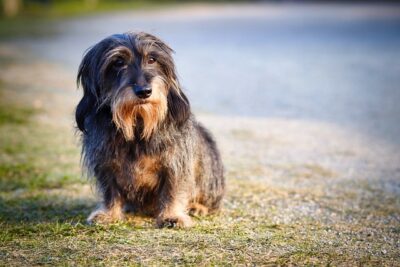
Dachshund Breeds Overview
Varieties: Smooth, Long-haired, Wire-haired
Dachshunds come in three adorable varieties, each with its own unique charm. Discover the distinct characteristics of smooth, long-haired, and wire-haired dachshunds. Whether you’re intrigued by the sleek appeal of miniature dachshunds, captivated by the elegance of long-haired Dachshunds, or drawn to the distinct coat of wirehaired dachshunds, each variety brings its own delightful traits to this beloved dog breed.
Traits and Characteristics
Dachshunds, renowned for their distinctive appearance and spirited demeanor, exhibit a unique set of traits and characteristics. These small hounds are known for their elongated bodies and short legs, originally bred for hunting purposes. Despite their diminutive size, Dachshunds are bold and confident, often displaying a tenacious and independent spirit.
They are remarkably loyal to their families, forming strong bonds and displaying an affectionate nature. With a keen sense of curiosity, Dachshunds are inquisitive explorers, and their playful disposition makes them delightful companions. Their intelligence and stubbornness can pose training challenges, but their loving nature and vivacious personality ensure that Dachshunds bring joy and charm to any household.
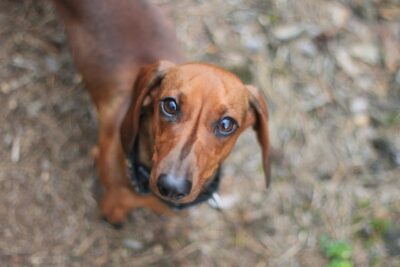
Defining Hypoallergenic
Criteria for Hypoallergenic Breeds
What makes a dog hypoallergenic? Let’s break down the criteria and see if dachshunds fit the bill. Hypoallergenic dogs are often characterized by their minimal shedding and reduced production of allergens like dander and saliva. While no dog is completely allergen-free, certain breeds are considered more hypoallergenic than others.
Dachshunds and Hypoallergenic Qualities
Are dachshunds truly hypoallergenic? We’ll explore the specific qualities that may or may not align with hypoallergenic standards. Hypoallergenic dogs are often sought after by individuals with allergies, as they are believed to produce fewer allergens like dander and saliva. However, determining whether dachshunds fit the bill requires a closer look at their coat types, shedding patterns, and potential allergenic factors.
Dachshunds come in various coat varieties, including short, smooth coats and longer coats in the case of long-haired dachshunds. While they may not be considered traditionally hypoallergenic breeds, individual reactions can vary. Understanding the intricacies of dachshund characteristics and their impact on allergies is essential for those considering these charming dogs as companions.

Dachshund Coat Composition
Fur Types in Dachshunds
Dachshunds exhibit three distinct fur types—short-haired, long-haired, and wire-haired—each contributing to their unique charm. Short-haired Dachshunds boast a smooth coat that sheds less, requiring minimal grooming. Long-haired Dachshunds feature silky, flowing locks that, while elegant, necessitate regular grooming to prevent matting and reduce shedding.
Wire-haired Dachshunds possess a coarse, dense coat, providing a distinct appearance and requiring maintenance to manage shedding. Whether embracing the sleek simplicity of the short-haired variety, the elegant allure of the long-haired type, or the rugged charm of the wire-haired coat, Dachshund enthusiasts can choose a furry companion that suits their preferences and grooming commitment.
Influence on Allergic Reactions
The composition of a Dachshund’s coat, whether short-haired, long-haired, or wire-haired, significantly influences its impact on allergic reactions in individuals. Short-haired Dachshunds tend to shed less, potentially making them more suitable for those with mild allergies. Long-haired Dachshunds may trap more allergens due to their flowing coat but can be managed through regular grooming.
Wire-haired Dachshunds, with their coarse and dense coat, also require maintenance to reduce shedding. Individuals with dog allergies may react differently to various coat types, and spending time with Dachshunds beforehand can help assess tolerance levels. While no dog breed is entirely hypoallergenic, understanding coat composition aids in informed decisions, emphasizing the importance of grooming and a clean living environment for a comfortable coexistence.

Common Misconceptions
Popular Beliefs about Dachshunds
There are plenty of myths surrounding dachshunds and allergies. Let’s debunk some common misconceptions.
Dispelling Myths: Dachshunds and Allergies
Dispelling the myth of Dachshunds being hypoallergenic is essential for prospective pet owners seeking accurate information. Contrary to popular belief, Dachshunds are not hypoallergenic, as they do shed and produce allergens in their dander, saliva, and urine proteins.
While their shedding might be less pronounced compared to some breeds, it is crucial to acknowledge the potential for allergic reactions in sensitive individuals. Regular grooming practices, coupled with maintaining a clean living environment, can help mitigate allergens. Understanding these realities ensures that those considering Dachshund companionship are well-prepared to manage potential allergies and enjoy a fulfilling relationship with these charming canine companions.

Shedding Patterns in Dachshunds
Shedding Frequency
The shedding frequency of Dachshunds can vary depending on their coat type – whether short-haired, long-haired, or wire-haired. Short-haired Dachshunds tend to shed less compared to their long-haired counterparts, but all coat types will experience some level of shedding throughout the year.
Shedding Seasons
Dachshunds, like many dogs, experience shedding seasons throughout the year. While shedding can vary among individual dogs and is influenced by factors such as health and climate, Dachshunds typically undergo more noticeable shedding in the spring and fall.
During these transitional seasons, changes in daylight and temperature can trigger a shedding response as dogs adjust their coats. The shedding helps them prepare for warmer or cooler weather by either shedding the winter coat for a lighter summer one or growing a thicker coat for the winter.

Factors Influencing Allergies
Dachshund Grooming Practices
Dachshund grooming practices are crucial for maintaining the well-being and appearance of these unique and delightful canine companions. Given their short, long, or wire-haired coat varieties, the grooming needs of Dachshunds may differ.
Regular brushing is essential for all coat types, helping to reduce shedding, prevent matting, and distribute natural oils for a healthy coat. Short-haired Dachshunds typically require less frequent brushing, while long-haired Dachshunds benefit from more regular sessions to prevent tangles.
Bathing should be done as needed, typically every few months, unless the Dachshund gets particularly dirty. Over-bathing can strip their coat of natural oils, leading to skin issues.
Nail trimming is another crucial aspect of Dachshund grooming. Long nails can be uncomfortable for the dog and may affect their posture. Regular dental care, including brushing or providing dental chews, helps maintain good oral hygiene.
Ear cleaning is vital, especially for long-eared Dachshunds prone to ear infections. Gently clean their ears regularly to remove wax and debris.
Professional grooming may be necessary for wire-haired Dachshunds to maintain the characteristic appearance of their coat.
Overall, a consistent grooming routine not only keeps Dachshunds looking their best but also contributes to their health and well-being. Regular grooming sessions also provide an opportunity to check for any signs of health issues, ensuring a happy and healthy life for these spirited and affectionate dogs.
Importance of a Clean Living Environment
Maintaining a clean living environment is crucial for the well-being of Dachshunds and plays a significant role in managing factors that may influence allergies. Several key factors contribute to the importance of a clean space for both the Dachshund and its owners.
Firstly, Dachshunds, like all dogs, produce allergens such as dander, saliva, and urine proteins. These allergens can trigger allergic reactions in sensitive individuals. Regular cleaning, including vacuuming, dusting, and sweeping, helps reduce the presence of these allergens in the home environment.
Secondly, Dachshunds are known for their love of burrowing and exploring, often bringing outdoor elements, dirt, and pollen indoors. Regular bathing and grooming routines for the Dachshund help minimize the transfer of allergens from their coat to the living space.
Thirdly, a clean living environment is especially important for individuals prone to allergies, as it helps create a healthier atmosphere. Keeping bedding, rugs, and the Dachshund’s favorite spots clean contributes to a more allergen-free environment.
Ventilation and air quality also play a role. Adequate ventilation helps circulate air and reduce the concentration of allergens. Consider using air purifiers and ensuring good airflow in the home.
Hypoallergenic Dog Breeds Comparison
Analyzing Dachshunds Against Other Breeds
How do dachshunds stack up against other hypoallergenic breeds? We’ll compare and contrast to give you a clearer picture.
Allergy-Friendly Alternatives
If dachshunds aren’t the perfect fit, we’ll explore alternative breeds that might better suit allergy-prone individuals.
When it comes to shedding, Dachshunds exhibit regular hair loss like many other breeds. Understanding the shedding frequency and whether there are specific shedding seasons can provide valuable insights for prospective Dachshund owners, especially those with concerns about allergies.
For individuals seeking a hypoallergenic dog breed or low shedding dogs, exploring alternatives to Dachshunds becomes essential. While Dachshunds may not be considered hypoallergenic, other breeds like the soft-coated wheaten terrier, Dachshund Poodle mix, Portuguese water dog, and Irish water spaniel are known for their hypoallergenic qualities. Additionally, considering mixed breeds can offer unique options for those with specific allergy concerns.

Grooming Tips for Allergy Management
Proper Brushing Techniques
For Dachshund owners managing allergies, proper brushing techniques play a vital role in reducing potential irritants. Dachshunds come in short-haired, long-haired, and wire-haired varieties, each requiring specific grooming attention.
Regular brushing, at least a few times a week, helps minimize shedding, prevents the accumulation of loose hair, and contributes to less dander release. By removing dead skin cells and effectively managing shedding, owners, including those considering miniature Dachshunds, can create a more hypoallergenic environment for their beloved furry companions.
For short-haired Dachshunds, a soft-bristle brush is effective, while long-haired Dachshunds benefit from more frequent brushing with a slicker brush to prevent matting. Wire-haired Dachshunds require hand-stripping or trimming to maintain their distinctive coat. By incorporating these proper brushing techniques into a routine, owners can significantly mitigate allergens and create a healthier living environment for both themselves and their Dachshund companions.
Using Allergy-Friendly Grooming Products
For Dachshund owners navigating allergies, incorporating allergy-friendly grooming products is key to maintaining a healthy living environment. Opting for hypoallergenic dog shampoo and conditioner helps minimize potential skin irritants and allergic reactions in sensitive individuals. These products are designed to be gentle on the dog’s skin and coat, reducing the likelihood of triggering allergies.
Additionally, using grooming tools, such as brushes and combs, made from hypoallergenic materials can further contribute to allergy management. By prioritizing allergy-friendly grooming products tailored for short hairs, Dachshund owners ensure a comfortable and safe grooming experience for their furry companions, fostering a harmonious living space for all. These tools assist in minimizing loose hairs and lessening dander release, making them particularly beneficial for people with allergies, even when dealing with the double coat of certain Dachshund varieties.
The Myth of the Hypoallergenic Label
Challenges in Labeling Dachshunds Hypoallergenic
Labeling Dachshunds as hypoallergenic poses challenges due to their shedding tendencies and the production of allergens like dander, saliva, and urine proteins. While certain coat types may shed less than others, no Dachshund can be considered entirely hypoallergenic. Individuals with allergies may still experience reactions, making it important for prospective owners to spend time with Dachshunds before bringing them home.
Factors such as grooming practices, regular cleaning, and maintaining a tidy living environment play significant roles in managing allergens associated with Dachshunds. Thus, understanding the complexities of labeling Dachshunds as hypoallergenic allows for more informed decisions and better allergy management.
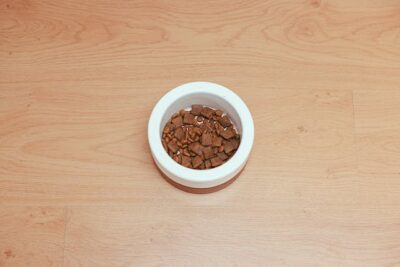
Impact of Diet on Allergies
Nutrition and Coat Health
The impact of diet on allergies and coat health is a crucial consideration for Dachshund owners aiming to promote overall well-being. A well-balanced and nutritious diet can positively influence the health of a Dachshund’s coat, reducing the likelihood of skin issues and excessive shedding that may contribute to allergies. Omega-3 fatty acids, commonly found in fish oil supplements or certain foods, can enhance coat health and mitigate skin irritations.
Additionally, a diet tailored to a Dachshund’s specific needs helps maintain a healthy skin barrier, potentially reducing the release of allergens. Consultation with a veterinarian to determine the most suitable diet for individual Dachshunds can significantly impact their overall health and contribute to allergy management.
Dietary Considerations for Allergies
Dietary considerations play a pivotal role in managing allergies for Dachshunds. Identifying and addressing potential food allergens is crucial, as certain ingredients may contribute to skin irritations and allergic reactions. Opting for high-quality, hypoallergenic dog food with limited ingredients can be beneficial, as it reduces the likelihood of triggering sensitivities.
Furthermore, consulting with a veterinarian to tailor a diet that aligns with the specific needs and sensitivities of individual Dachshunds is essential. A well-balanced and nutritious diet not only supports overall health but also aids in minimizing potential allergens, contributing to a healthier and more comfortable life for these charming canine companions.
Recognizing Signs of Allergies in Dachshunds
Behavioral Changes
Recognizing signs of allergies in Dachshunds, particularly through behavioral changes, is crucial for proactive health management. Allergic reactions in Dachshunds may manifest as alterations in behavior, such as increased scratching, biting, or licking. Persistent paw licking or face rubbing could indicate skin discomfort or irritation caused by allergens.
Additionally, changes in energy levels, appetite, or demeanor may signal underlying allergic issues. Close observation of these behavioral shifts allows owners to promptly address potential allergens, seek veterinary advice, and implement strategies to mitigate allergic reactions, ensuring the well-being and comfort of their Dachshund companions.
Physical Symptoms
Identifying signs of allergies in Dachshunds involves being attuned to various physical symptoms. Skin-related issues, such as redness, inflammation, or persistent itching, are common indicators of allergic reactions in these dogs. Excessive scratching or biting at specific body areas, recurrent ear infections, and watery eyes are additional physical symptoms that may suggest allergies.
Respiratory symptoms like coughing or sneezing can also occur. Owners should be vigilant about any changes in their Dachshund’s coat, skin, or overall physical condition, promptly seeking veterinary advice if signs of allergies emerge. Early recognition and intervention contribute to effective allergy management and ensure the health and comfort of Dachshund companions.
Addressing Allergic Reactions
Veterinary Consultations
Addressing allergic reactions in Dachshunds requires prompt veterinary consultations for a comprehensive and tailored approach. When owners observe signs of allergies, be they behavioral or physical, seeking professional advice is crucial. Veterinarians can conduct thorough examinations to identify specific allergens affecting the Dachshund and recommend appropriate interventions.
Allergy testing may be recommended to pinpoint triggers, facilitating a more targeted management plan. Veterinary consultations also allow for discussions on dietary considerations, grooming practices, and potential medications to alleviate symptoms. By collaborating with a veterinarian, Dachshund owners can ensure the most effective and individualized care, promoting the well-being and comfort of their cherished canine companions.
Allergy Management Strategies
Effectively managing allergies in Dachshunds involves a combination of strategic approaches. First and foremost, maintaining a clean living environment through regular grooming, cleaning, and using hypoallergenic products can significantly reduce allergen exposure. Dietary considerations, such as providing a balanced and nutritious diet tailored to the individual dog’s needs, contribute to overall health and may alleviate allergic reactions.
Recognizing and promptly addressing signs of allergies, whether behavioral or physical, allows for proactive intervention. Consulting with a veterinarian to identify specific allergens and exploring potential treatment options, including allergy medications or immunotherapy, is essential. By employing a comprehensive approach, Dachshund owners can create a healthier and more comfortable environment for their beloved furry companions, fostering a happy and allergy-managed lifestyle.
Summary
Key Takeaways
Summarizing our exploration, let’s highlight the key points that demystify the hypoallergenic status of dachshunds.
Revisiting Hypoallergenic Notions
Before we wrap up, let’s take a final look at common notions about hypoallergenic dogs and how dachshunds fit into the picture.
Understanding the impact of diet on allergies in dachshunds is crucial for responsible pet ownership. Nutrition plays a significant role in maintaining a healthy coat, which, in turn, can contribute to allergy management. Exploring specific dietary considerations for allergy-prone dachshunds provides a proactive approach to addressing potential allergic reactions.
Recognizing signs of allergies involves observing both behavioral changes and physical symptoms in your dachshund. Being attentive to these cues allows for early intervention and improved overall well-being. Veterinary consultations are paramount when allergies are a concern, as professionals can provide tailored advice and treatment options.
To manage allergies effectively, implementing practical strategies is key. This includes a combination of grooming practices, maintaining a clean living environment, and considering dietary adjustments. By summarizing key takeaways, we aim to provide a concise guide for dachshund owners navigating the complexities of allergies.
Before concluding, let’s revisit common notions about hypoallergenic dogs and dispel any misconceptions. Understanding that no dog breed is entirely hypoallergenic helps set realistic expectations for potential dachshund owners. While dachshunds may not be hypoallergenic, informed care and management strategies can create a loving and healthy environment for both the pet and its owner.
Frequently Asked Questions: Are Dachshunds Hypoallergenic?
- Q1: Are Dachshunds hypoallergenic?
- A1: No, Dachshunds are not hypoallergenic. They shed and produce allergens like dander, saliva, and urine proteins, which can trigger allergic reactions in sensitive individuals.
- Q2: What does hypoallergenic dog mean?
- A2: A hypoallergenic dog breed is one that produces fewer allergens, making it less likely to trigger allergies in people with sensitivities to pet hair and dander.
- Q3: Can Dachshunds cause dog allergies?
- A3: Yes, Dachshunds can trigger allergies in some people due to their shedding and the production of allergens.
- Q4: How do I manage dog hair allergies with a Dachshund?
- A4: Regular grooming, using hypoallergenic dog products, and maintaining a clean living environment can help manage dog hair allergies.
- Q5: Are there hypoallergenic dog breeds for allergy sufferers?
- A5: Yes, breeds like the Bichon Frise are considered hypoallergenic and may be more suitable for people with allergies.
- Q6: Do Miniature Dachshunds shed less?
- A6: Miniature Dachshunds shed, but the amount of shedding may vary. Regular grooming can help manage loose hair.
- Q7: How can I remove pet dander from my home?
- A7: Using an air purifier, regular cleaning, and grooming practices can help remove pet dander and minimize allergens.
- Q8: Do Dachshunds shed differently than other dogs?
- A8: Dachshunds shed, and their shedding frequency may vary based on their coat type.
- Q9: Can Dachshunds cause skin rashes and itchy eyes in allergy sufferers?
- A9: Yes, Dachshunds may contribute to skin rashes and itchy eyes in individuals with allergies to pet dander.
- Q10: Should I consider a Dachshund if I have allergies?
- A10: Prospective Dachshund owners with allergies should spend time with the breed to assess their individual sensitivity before bringing one home.
Conclusion: Are Dachshunds Hypoallergenic
In the quest to unveil the truth about dachshunds and their hypoallergenic qualities, we’ve navigated through various aspects, stories, and expert insights. Whether you’re a seasoned dachshund owner or a prospective one, understanding the dynamics of allergies is key to fostering a happy and healthy relationship with these charming canine companions.
Addressing concerns related to severe allergies, regular interaction with your dog, considerations for different coat types like the double-coated Dachshund, and managing potential allergic reactions to dog hair contribute to a well-informed and enriching experience with these lovable companions. For dog owners and dog lovers, understanding the shedding tendencies, loose hairs, and potential allergic triggers of a wiener dog is essential in creating a harmonious living environment with your furry friend.
If you’re ready to welcome a Dachshund into your home, explore our selection of Dachshund puppies for sale in Georgia and surrounding areas.

